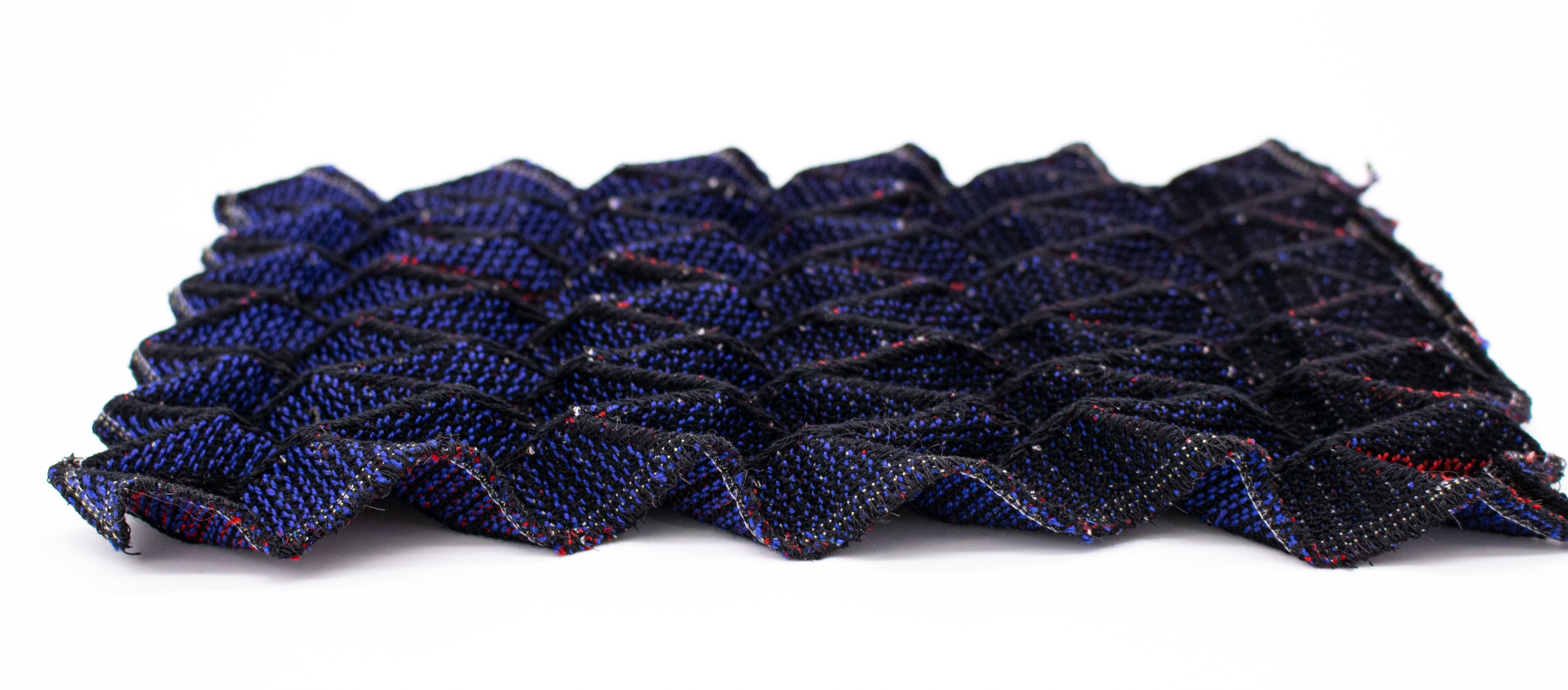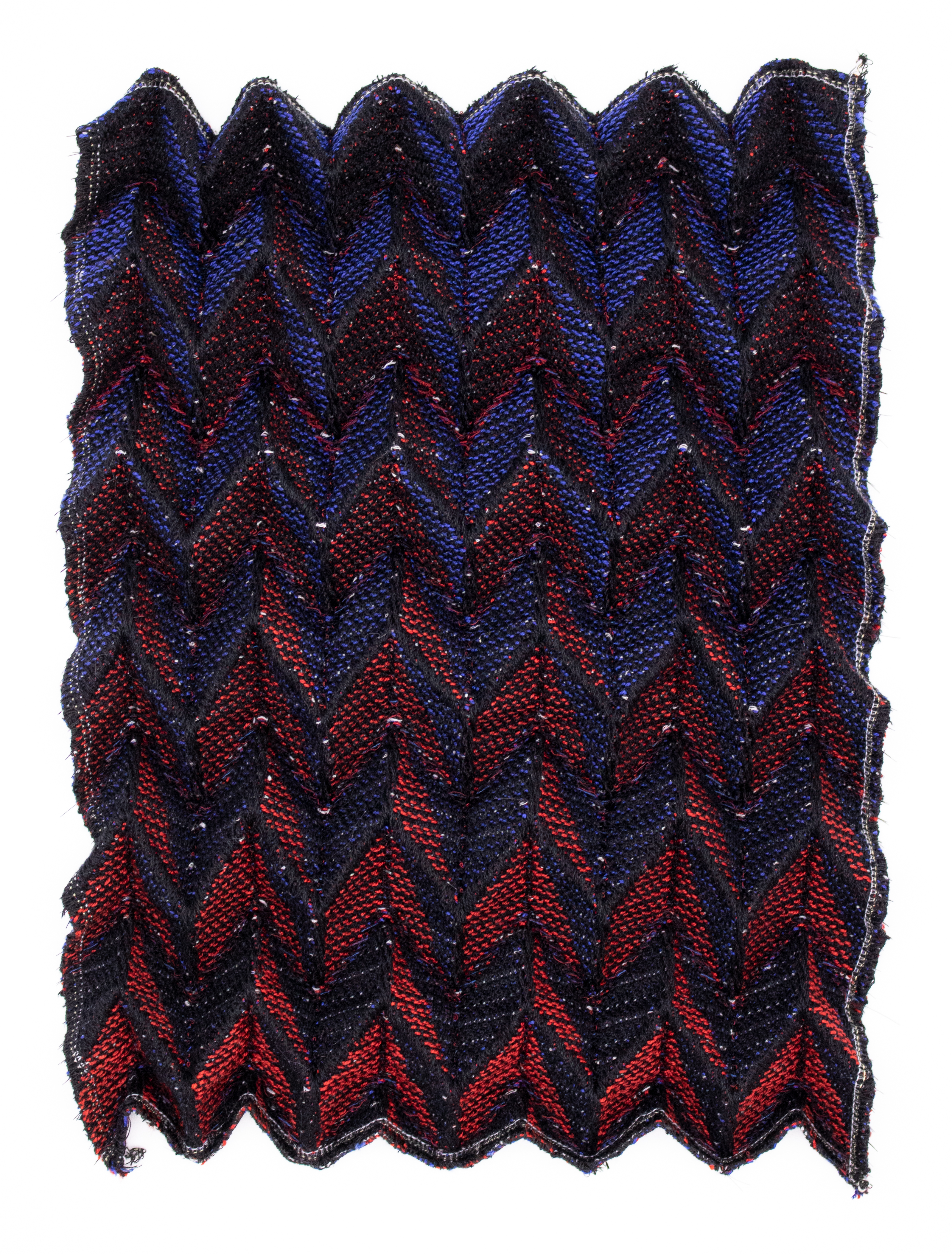


Anamorphic Auxetics
2020, TC-2 Jacquard Woven
Warp:
Weft:
An auxetic is another word for a material with a negative Poisson’s ratio. The fold pattern used here is the most famous example of an auxetic corrugation—the Miura-Ori fold.
An anamorphic illusion is the tern used to describe an object which can take on differing appearances based upon the angle at which it is viewed.
The goal for this project was to examine how different tiling systems result in differing anamorphic illusions. The three particular tiling systems (image on the right) used in these pieces exhibit 3, 8, and 6 different appearances, respectively.
An anamorphic illusion is the tern used to describe an object which can take on differing appearances based upon the angle at which it is viewed.
The goal for this project was to examine how different tiling systems result in differing anamorphic illusions. The three particular tiling systems (image on the right) used in these pieces exhibit 3, 8, and 6 different appearances, respectively.

Gradient (left in above image)
![]()
![]()
![]()
![]()




The above pattern displays the least amount of angular appearances (3, not counting the top view)). In retrospect, this is because of the fact that the pattern is symmetrical across the vertical folds, so it rules out multiple patterns from side views.
The following pattern was made upon making this insight, and despite being the simplest pattern visually, it resulted in the most (8, not counting the top view) angular appearances of my trials.
The following pattern was made upon making this insight, and despite being the simplest pattern visually, it resulted in the most (8, not counting the top view) angular appearances of my trials.
Striped Tiles (middle)
![]()
![]()
![]()
![]()
![]()
![]()
![]()
![]()
![]()
Striped Tiles (middle)
![]()
![]()
![]()
![]()
![]()
![]()
![]()
![]()
![]()









Triangle Gradient (right)
![]()
![]()
![]()
![]()
![]()
![]()
![]()







